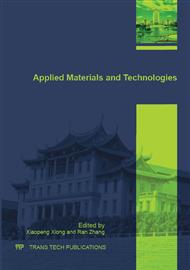p.90
p.97
p.101
p.107
p.112
p.117
p.122
p.127
p.134
Continuous Casting of a Multi-Crystalline Silicon Billet
Abstract:
In order to improve the production efficiency, numerical simulation and experiments of continuous casting of a multi-crystalline silicon (mc-silicon) billet were carried out. Modeling works were done firstly to optimize casting recipe and predict billet cooling behaviors, a three-dimensional finite element model for the simulation of thermal field and fluid flow was built. The continuous casting of cylindrical silicon billet was studied considering different casting parameters such as withdrawal speed and heat transfer ability of mold. The simulation results indicate that lower casting speed and lower heat transfer coefficient of mold are beneficial to acquire better morphology. Experimental works were practiced lying on the modeling results, using the self-designed mc-silicon continuous casting apparatus, mc-silicon billet with a diameter of 100 mm was obtained.
Info:
Periodical:
Pages:
112-116
Citation:
Online since:
November 2015
Price:
Сopyright:
© 2015 Trans Tech Publications Ltd. All Rights Reserved
Share:
Citation:


